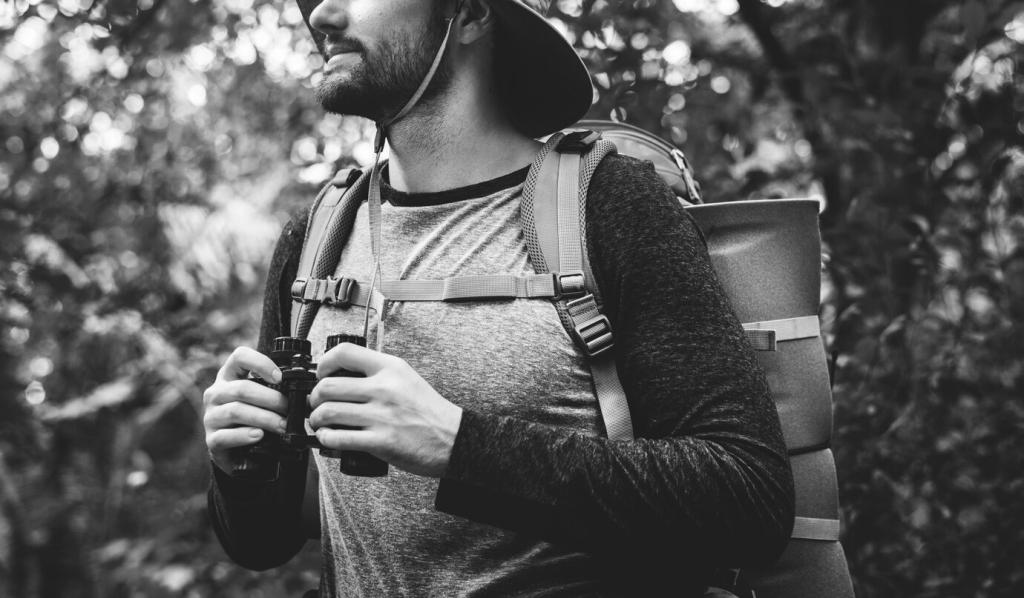Your Winter Mountain Hiking Gear Checklist
Chosen theme: Winter Mountain Hiking Gear Checklist. Step into the frozen high country with confidence—this friendly, field-tested checklist turns biting winds and deep snow into a rewarding, safe adventure. Subscribe for fresh seasonal tips and share your own must-pack items so fellow hikers can benefit.

Base Layers that Manage Sweat in Freezing Air
Moisture is your enemy when temperatures plummet, so prioritize wicking and quick-drying base layers. Merino wool controls odor and regulates temperature, while synthetics excel at rapid drying. Avoid cotton entirely. Try a snug fit to move sweat away, and pack a dry spare for the summit break.
Insulation That Actually Insulates When You Stop
When you pause on a windy ridge, a lofty puffy becomes your lifeline. Down is lighter and packs smaller, but synthetic maintains warmth when damp. Consider a midweight fleece for hiking, then a belay-style puffy for breaks. Stash it high in your pack so it’s grabbed the moment you cool.
Shells, Venting, and the Art of Not Overheating
A waterproof-breathable shell stops spindrift and spiky gusts, but overheating creates sweat that chills later. Seek pit zips, two-way zippers, and adjustable cuffs. Use a wind shell during steady climbs, then upgrade to a hard shell above treeline. The checklist mantra: vent early and vent often.
Boots, Traction, and Gaiters
Choose boots rated for freezing temperatures with reliable insulation and a waterproof membrane. Rigid soles improve crampon compatibility and edge hold on crust. Test fit with thick socks. A removable liner can dry overnight in a hut or car. Your toes will thank you at the final switchback.
Boots, Traction, and Gaiters
Microspikes shine on packed trails and icy approaches. Crampons bite steep, firm slopes and windboard. Snowshoes float through unconsolidated powder. Consult your route’s typical conditions and carry the lightest effective option. In mixed terrain, pair snowshoes with a compact microspike set for versatility.
Boots, Traction, and Gaiters
Knee-high gaiters keep snow out and heat in, especially during postholing or windy traverses. Combine thin liner socks with thick wool outers to manage moisture and friction. Pre-tape hot spots, and carry a dry sock pair for the descent. Your Winter Mountain Hiking Gear Checklist should include both.
Navigation and Communication, When Trails Disappear
Redundant Navigation: Map, Compass, and an Offline GPS App
Carry a paper map in a waterproof sleeve and a quality compass you know how to use. Download offline maps to your phone and a backup device. Set waypoints at critical junctions before leaving the car. Practice bearings at home, and confirm position regularly instead of waiting until doubt creeps in.
Power Strategy: Cold-Proof Your Batteries and Cables
Lithium batteries perform best in the cold, so favor them for headlamps and devices. Keep power banks warm in an inner pocket, and use short, reliable cables. Airplane mode preserves charge, but periodic tracking still helps in emergencies. Pack a tiny foam sleeve to insulate your phone from frigid wind.
Emergency Contact: PLB, Satellite Messenger, and Check-In Plan
A personal locator beacon or satellite messenger bridges the gap when signal dies. Establish check-in windows and a turn-back time with a trusted contact. Share your route, trailhead, vehicle details, and group size. Your Winter Mountain Hiking Gear Checklist should treat communication as safety, not convenience.
Safety and Emergency Essentials
Compact First Aid and Repair Kit that Actually Gets Used
Stock blister care, pain relief, antiseptic, and a pressure bandage. Add duct tape, zip ties, a multi-tool, and a few bolts for snowshoe bindings. Tailor prescriptions if needed. Practice simple repairs at home so cold fingers and wind don’t become part of the learning curve on a ridge.
Bivy, Heat Packs, and Fire: Your Backup Warmth Triangle
A reflective bivy or emergency shelter buys life-saving time. Chemical hand warmers restore dexterity to work zippers and stoves. A stormproof lighter and ferro rod ensure ignition when lashing sleet kills matches. Together, they transform a delay into a manageable bivouac instead of a dangerous waiting game.
Avalanche Awareness and Group Protocols
If your route crosses avalanche terrain, carry beacon, shovel, and probe—and the training to use them. Check the daily bulletin, discuss safe travel spacing, and identify terrain traps. Rehearse signals before leaving the trailhead. Your Winter Mountain Hiking Gear Checklist supports decisions; your judgment keeps everyone alive.
Fuel, Hydration, and Warmth from the Inside
High-Calorie Snacks that Don’t Freeze into Bricks
Choose energy-dense foods like nut butters, soft chews, and chocolate with higher fat content. Cut bars into bite-sized pieces beforehand. Keep snacks in inner pockets to prevent freezing. Schedule micro-fuels every forty-five minutes, even if you’re not hungry—the cold often hides early depletion signals.




